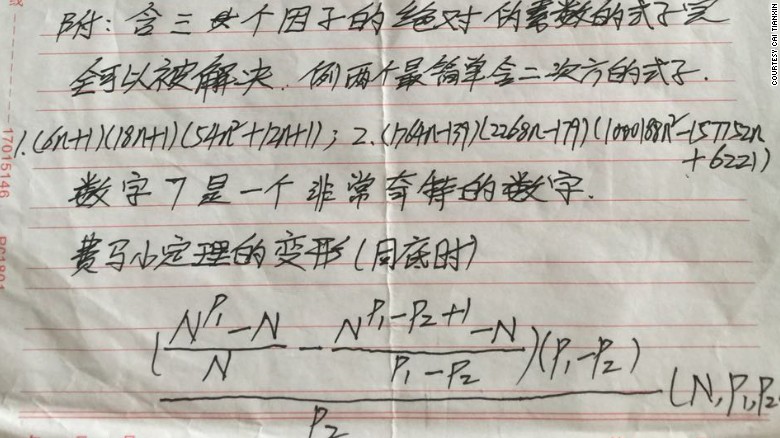Apparently it is an alternative proof of the infinitude of Carmichael numbers.
The other proof mentioned in the articles ("done by academics 20 years ago") is:
- W. R. Alford, Andrew Granville, Carl Pomerance (1994) "There are Infinitely Many Carmichael Numbers"
As for the method, unless someone took notes of the lecture at Zhejiang University, I guess it is unpublished at this point (except for the fragments shown in the news).
As a side note, notice two equations shown in one the photos:
$$1. \quad(6n+1)(18n+1)(54n^2+12n+1)$$ $$2. \quad(1764n+139)(2268n+179)(1000188n^2-157752n+6221)$$$$2. \quad(1764n-139)(2268n+179)(1000188n^2-157752n+6221)$$
This looks very similar to Chernick's result that $(6n+1)(12n+1)(18n+1)$ is a Carmichael number if each of the factors is prime. It is open whether this family of Charmichael numbers is infinite or not.
This is pure speculation, but the non-linear factors in Yu's numbers might make a big difference, since that is not a Dickinson's conjecture-type problem anymore.
Edit. Added data for very small values ($n<11$) for the first expression. $C_i$ indicates the $i$-th Carmichael number.
\begin{array}{|c|c|c|c|} \hline \mathrm{n}& \mathrm{eq. 1 } & \\ \hline 1 & 7 \cdot 19\cdot 67 &8911=C_7\\ \hline 2 & 13 \cdot 37\cdot 241 &115921=C_{18}\\ \hline 3 & - &-\\ \hline 4 & - &-\\ \hline 5 & - &-\\ \hline 6 & 37 \cdot 109\cdot 2017& 8134561=C_{93}\\ \hline 7 & 43 \cdot 127\cdot 2731& 14913991=C_{125}\\ \hline 8 & - & -\\ \hline 9 & - & -\\ \hline 10 & 61 \cdot 181\cdot 5521& 60957361=C_{209}\\ \hline \end{array}
For the other expression,Edit. See the only prime triplet (again, $n<11$) is $5431\cdot 6983 \cdot 8534657$,comment of Zhiyun Cheng below for $n=3$ (if someone can confirm it to be Carmichael I'll edit)a translation of the text in chinese.

